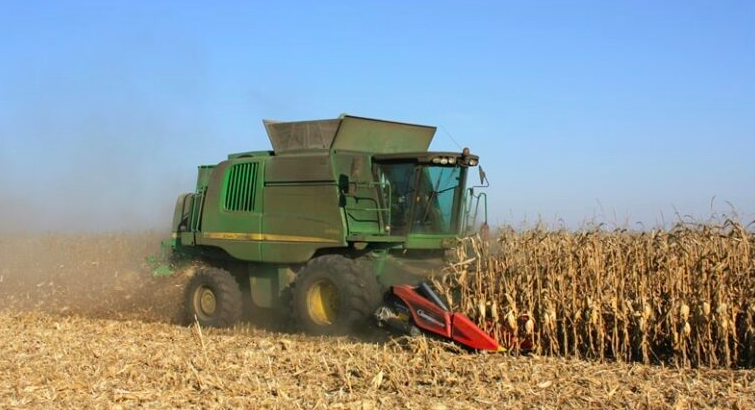Efficiency in farming is more critical than ever as the demand for food continues to rise while resources remain limited. Farmers must find ways to maximize yields while minimizing waste to ensure long-term sustainability and profitability. Adopting modern techniques, technology, and best practices can help farms achieve greater efficiency. This guide explores key strategies to improve farm productivity and reduce waste.
1. Optimize Soil Health
Healthy soil is the foundation of a productive farm. Ensuring proper soil management can lead to higher crop yields and reduced input costs. Some ways to improve soil health include:
- Crop Rotation: Alternating crops each season helps maintain soil fertility and reduces the risk of pests and diseases.
- Cover Cropping: Planting cover crops like clover or rye prevents soil erosion, improves organic matter, and enhances water retention.
- Composting and Organic Matter Addition: Adding compost or manure enriches the soil with essential nutrients and beneficial microbes.
- Soil Testing: Regular soil tests help farmers understand nutrient deficiencies and avoid unnecessary fertilization.
By improving soil health, farmers can increase productivity while reducing the need for synthetic fertilizers.
2. Implement Precision Agriculture
Technology has revolutionized modern farming. Precision agriculture uses data-driven approaches to optimize planting, irrigation, and fertilization. Some techniques include:
- GPS-Guided Machinery: Tractors and harvesters equipped with GPS technology ensure accurate planting and harvesting, reducing overlaps and resource waste.
- Drones and Remote Sensing: Drones help monitor crop health, detect pest infestations, and identify areas that need attention.
- Automated Irrigation Systems: Smart irrigation systems, equipped with ball valves, regulate water flow efficiently by adjusting usage based on real-time weather data and soil moisture levels.
- Variable Rate Technology (VRT): This technology allows farmers to apply fertilizers and pesticides only where needed, reducing excess use.
Precision agriculture leads to better resource allocation, higher yields, and lower operational costs.
3. Reduce Water Waste
Water is a precious resource in farming, and efficient water management is crucial for sustainable agriculture. Best practices include:
- Drip Irrigation: This method delivers water directly to plant roots, reducing evaporation and water waste.
- Rainwater Harvesting: Capturing rainwater for irrigation reduces reliance on groundwater and conserves water resources.
- Mulching: Adding mulch around plants helps retain soil moisture and reduces the need for frequent watering.
- Smart Irrigation Scheduling: Using weather data to determine the best times to irrigate prevents overwatering and promotes healthier crops.
Efficient water use not only reduces costs but also supports long-term farm sustainability.
4. Minimize Post-Harvest Losses
A significant amount of food is lost after harvesting due to improper handling, storage, and transportation. To minimize losses, farmers can:
- Use Proper Harvesting Techniques: Timing the harvest correctly ensures peak freshness and reduces spoilage.
- Invest in Cold Storage: Proper storage facilities extend the shelf life of perishable crops.
- Improve Transport Logistics: Using well-maintained vehicles and proper packaging prevents damage during transportation.
- Train Workers in Post-Harvest Handling: Educating farm workers on best practices ensures produce is handled with care.
Reducing post-harvest losses increases profitability and ensures more food reaches consumers.
5. Integrate Sustainable Pest Management
Overuse of chemical pesticides can lead to environmental damage and pest resistance. Integrated pest management (IPM) offers a more sustainable approach:
- Biological Control: Introducing natural predators like ladybugs and predatory wasps helps control pests naturally.
- Crop Diversity: Planting a variety of crops reduces the spread of pests and diseases.
- Companion Planting: Certain plants, like marigolds, naturally repel pests when grown alongside crops.
- Targeted Pesticide Use: Applying pesticides only when necessary and in precise locations minimizes environmental impact.
IPM reduces costs and maintains ecological balance while effectively managing pests.
6. Invest in Renewable Energy
Energy costs can be a major expense in farming. Switching to renewable energy sources can lower costs and reduce environmental impact. Options include:
- Solar Panels: Solar energy can power irrigation systems, farm equipment, and storage facilities.
- Wind Energy: Small wind turbines can provide additional energy for farm operations.
- Biogas Systems: Converting farm waste into biogas offers a sustainable energy source while reducing waste disposal costs.
Using renewable energy sources enhances farm efficiency and reduces dependence on fossil fuels.
7. Improve Labor Efficiency
A well-trained workforce is essential for a productive farm. Farmers can improve labor efficiency by:
- Using Mechanization: Modern machinery reduces the need for manual labor and speeds up farm tasks.
- Providing Worker Training: Skilled workers can operate equipment more efficiently and handle crops properly.
- Scheduling Tasks Effectively: Organizing daily operations improves workflow and reduces downtime.
Optimizing labor improves overall farm efficiency and boosts productivity.
In Conclusion
Efficient farming is about making the most of available resources while minimizing waste. By improving soil health, adopting precision agriculture, reducing water waste, minimizing post-harvest losses, using sustainable pest management, investing in renewable energy, and optimizing labor, farmers can increase productivity and profitability. Implementing these best practices ensures long-term success and contributes to a more sustainable agricultural industry.










